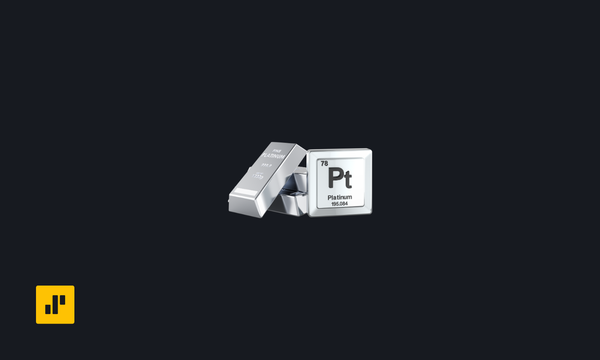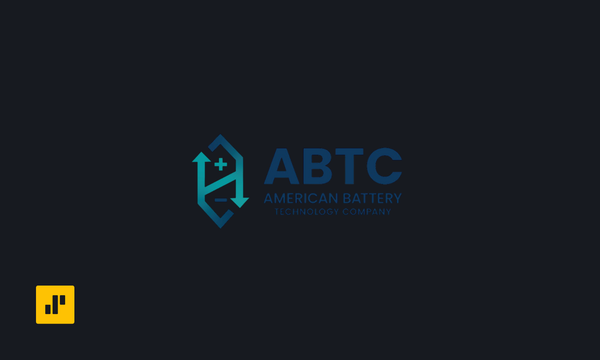Solana Investment Thesis

Originally published September 24, 2023. After publishing this report, Solana ran from $19.20 to $210 (11x).
Thesis Statement
Solana’s price will outperform most majors in the crypto market in the coming 24 months due to accelerating over competitors in 3 key areas:
- Layer 1 Scalability
- Traction/Adoption
- Social Relevance
Additionally, most critiques of Solana’s technology and its token SOL are distorted which has resulted in period of undervaluation.
Abstract
(1) Layer 1 Scalability
Solana’s architecture allows it to scale transaction speed and transaction throughput to levels far past its competitors which uniquely positions it to absorb high levels of on-chain demand while maintaining minuscule and stable fees. Solana’s architecture scales at its base layer meaning it does not fragment liquidity across multiple layer 2 chains, giving it several hidden advantages over competing chains.
(2) Traction/Adoption
Solana is positioned to capture a number of use cases that can only scale on Solana in addition to dramatic costs savings on traditional use cases like payments processing and DeFi. Because of this, we’re seeing a promising amount of Solana network adoption including Visa payment processing, Shopify payment processing, Decentralized Physical Infrastructure Networks (DePIN) like Render, Hivemapper, and Helium, as well as an emerging DeFi ecosystem.
(3) Social Relevance
Solana’s dark past with Alameda Research, FTX, and SBF has made it a spectacle in the crypto space. While many chains suffer the fate of irrelevance, Solana is the subject of great debate with healthy mix of staunch supporters and vehement critics. If nothing else, this ubiquitous social discussion signals relevance and staying power in the midst of a harsh bear market.
Context
This is not intended to be a technical paper.
The purpose of this report is to understand Solana at a level that helps us identify positive risk/reward investment opportunities based on supply and demand dynamics for $SOL.
If you are interested in understanding Solana at a more technical level, please see the Solana’s comprehensive Documentation.
Overview of Solana
Solana is a high-performance, proof-of-stake blockchain that boasts <1 second confirmation times (transaction speed), a low and stable fee market (<$0.001), and the ability to scale to meet the needs of commercial throughput requirements (hundreds of thousands of transactions per second.
At its core, Solana is a direct competitor to Ethereum. Like other decentralized layer 1 smart contract networks, Solana enables developers to build and deploy dApps and tokens.
(1) Scalability
Solana’s key advantage over other layer 1 smart contract networks is its integrated architecture vs the modular architectures most other chains utilize.
Without getting technical, Solana is built for speed and throughput, whereas many other blockchains utilize a modular design to offer more flexibility.
The main point here is that Solana can achieve commercial grade scalability at its base layer, whereas Ethereum and other chains require layer 2s to scale due to their inability to handle high throughput and and maintain low transaction costs at the base layer. Ethereum outsources throughput to these completely separate chains known as layer 2s.
In an effort to not get technical, layer 2s essentially execute many transactions then publish them back to Ethereum in a single bundled transaction, taking the transactional burden away from Ethereum.

The major problem with this approach is that it fractures liquidity (aka money) across a multitude of different chains.
Let’s walk through an example.
Let’s say you have $10k sitting on the Ethereum blockchain (ETH, USDC, USDT, or any other ERC-20 tokens). That $10k in value is constrained in what it can do by the low throughput and expensive gas fees of Ethereum.
If you want to trade on a decentralized derivatives exchange that has low fees and fast transaction times, you have to bridge your money off Ethereum. If you want to stake, yield farm, or play a blockchain game without paying huge fees, you have to bridge your money to a layer 2 chain.
Bridging to a layer 2 introduces friction, a transaction fee, and moves liquidity off Ethereum which has additional negative consequences.
The presence of many competing layer 2s results in shallow liquidity spread out across a multitude of different chains instead of all the available liquidity living on one single chain.
Liquidity, in essence, is the lifeblood of any blockchain.
Low liquidity equates to higher slippage and more expensive trades. Less value on chain also deters developers from building on that chain. Why would you want to build a project and launch a token on a chain that has no money on it?
This fragmented approach gets problematic fast. Multicoin Capital’s Kyle Samani explains it best:
By definition, each L1 and L2 is a distinct asset ledger with its own state. Those separate pieces of state can communicate, albeit with more latency and with more developer- and user-complexity (i.e., via bridges, such as LayerZero and Wormhole).
The more asset ledgers there are, the more the global state of all accounts fragments. This is unilaterally terrible for chains and users across many fronts. Fragmented state results inLess liquidity and therefore higher spreads for takersMore total gas consumption (since a cross-chain transaction by definition requires at least two transactions on at least two asset ledgers).More duplicative computations across asset ledgers (thereby reducing total system throughput): when the price of ETH-USDC moves on Binance or Coinbase, arbitrage opportunities become available on every ETH-USDC pool across all asset ledgers. (You can easily imagine a world in which there are 10+ transactions across various asset ledgers whenever ETH-USDC price moves on Binance or Coinbase. Keeping prices in line as a result of fragmented state is an extremely inefficient use of blockspace.)
It is important to recognize that creating more asset ledgers explicitly compounds costs along all of these dimensions, especially as it pertains to DeFi.
Solana’s competitive advantage is its ability to maintain low fees and high throughput at the Layer 1 level. Unlike Ethereum and Layer 2s on Ethereum which experience unpredictable fees spike, Solana maintains low and stable fees even under periods of high demand due to its localized fee market structure.

On Ethereum, only so many transactions can go through at once, so once the transaction queue (aka the mempool) is full, the only way to get your transaction to go through quickly is to pay more to cut ahead of the line.
Now let’s say there is a very hyped NFT mint on Ethereum that creates a lot of demand for transactions in a short amount of time. This creates a spike in gas fees as everyone wants to pay more to get their transaction to go through. On Ethereum, this makes transaction fees spike for all users, not just the users that are partaking in the NFT mint. The person who is trying to execute a trade on Uniswap, or rebalance their loans on Aave now have to pay high fees too.
Solana has a localized fee market that avoids this problem by separating transaction types and processing the transaction in parallel. The end result is predictable, low fees for the vast majority of all users at all times:

If Solana is so much more scalable than Ethereum and other smart contract networks, then why isn’t it valued higher?
- We’re still in early days. We have not reached endgame yet where there is demand for large amounts of blockspace from commercial grade applications, meaning Solana’s competitive advantage of scalability is simply not impactful in the current state of the industry. Visa is only just now piloting USDC payments on Solana. Once the industry is at the point where we see singular enterprises or applications demanding thousands of transactions per second, Solana’s competitive advantage in scalability will kick in.
- We’re in a bear market where appetite for speculation is low.
- Solana’s reputation has been temporarily tarnished by FTX/Alameda Research and network outages (more on this in a bit.)
To further illustrate point 1, we did briefly see a period of time where demand for transaction throughput drastically increased. Solana skyrocketed in adoption and price action in 2021 when Ethereum gas fees spiked. Solana was positioned as the low fee, scalable chain when there was pent-up demand on Ethereum with nowhere else to go (this was before layer 2s were functional).
This brings us to the next point. Solana is starting to get real world traction from projects with long-term scalability demands.
(2) Traction
Solana is starting to see real traction. Many projects have decided to move to Solana even after the FTX/Alameda collapse.
These 3 DePIN protocols have decided to build on Solana:
Helium (decentralized wireless network)
Hivemapper (decentralized mapping network)
Render (distributed GPU rendering network)
Solana is also home to a multitude of your typical DeFi apps (lending, DEXes, liquid staking, etc.) that are rapidly growing and iterating. The low fees and fast tx times makes DeFi accessible to smaller investors that cannot afford to pay $5 - $25 per transaction on Ethereum, or multiple transaction fees to bridge to an L2.
Solana Pay, a decentralized, open-source, peer-to-peer payments protocol built on Solana is now enables millions of of businesses as an approved app integration with Shopify.
Visa recently launched a pilot program to test processing USDC payments on Solana.
Of all the blockchains they could have chosen (including L2s), they see Solana as the most viable and promising network to potentially meet their demands for high throughput:

Visa is the 11th largest company in the world by market cap, and they are experimenting with Solana because they think it will help them power mainstream payment flows.
Visa’s interest in Solana validates the promise of Solana’s technology to a degree. Should they have success with their pilot program and fully integrate a Solana based payment solution, upside for Solana is obvious.

Other blockchains were considered by Visa, but the reasons for going with Solana were the fast speeds, low and stable fees, and the theoretic scalability to handle hundreds of thousands of transactions per second.
The final point is important considering Visa processes north of tens of thousands of transactions per second at times.
We believe that Solana will continue to see traction as more companies seek high scalability blockchain solutions.
3) Social Relevance
The social aspect of investing can not be ignored. In the age of social media and instant communication, the investing landscape has changed. We’ve seen social investing anomalies in the form of GameStop, DOGE, Bored Ape Yacht Club and many other memecoins and meme stocks. Investments that dominate the mindshare of platforms like X (twitter) or YouTube, particularly in a bull market when speculation is high has massively outsized returns.
Another great example is Tesla’s stock price which trades at a much higher P/E ratio than competing brands in part due to Elon Musk’s social reach.
Solana is positioned well in the mindshare of current base of all crypto investors because it has what many other promising projects do not: history.
Solana went on a massive run to from $1 to $260, and remains in the top 10-15 cryptocurrencies by market cap today. At its peak, it handled over $10B in TVL on its DeFi ecosystem and frequently is ranked top 3 in NFT volume traded at any given time.
It crashed to $8 in the wake of the FTX collapse due to its close association with the FTX brand, Sam Bankman-Fried, and the large amount of SOL owned by Alameda/FTX.
This made Solana a heavily covered topic by influencers on social platforms like Twitter and YouTube for months after the FTX collapse, and it’s still a heavily divisive topic today.
While there are many who have disdain for Solana and Alameda’s involvement with it, many look at the tech in a vacuum and do not care who was involved with it. This contentious debate and continued developments in the FTX saga (SBF going to jail, FTX liquidating assets, etc.) has kept Solana in the news and at the center of discussion.
While there are many projects with promising technology, most fail to gain enough awareness to become relevant. If nothing else, the drama around Solana and continued has helped keep Solana relevant by making it an attractive topic for creators on Twitter and YouTube to make content on.
Cardano is a great example of a coin that performed extraordinarily well in the last bull market on the back of crypto YouTubers (including Charles Hoskinson) pumping out videos on it daily. We expect Solana to maintain a similar amount of buzz on social media the next bull market.
A central part of our investment thesis on Solana is that the majority of major concerns and FUD have been addressed and are no longer valid. Below are 4 common concerns:
1) “Solana only went up bc it was supported by FTX/Alameda and other VCs. Without them pushing it, it won’t go back up.”
While VC’s did have a lot to do with the price of SOL going up in the bull market, much of the value they added remains in present. SOL is still listed on on major exchanges and there are still many well-funded projects building on Solana. Many projects funded by these VC’s have succeeded in building core pieces of the Solana ecosystem (Phantom, Backpack, MagicEden, etc). It’s in large part because of the large investments in the Solana ecosystem that Solana users enjoy high quality UX infrastructure like Backpack and Phantom and robust NFT marketplaces and DEXes like MagicEden, Tensor, and Jupiter Aggregator.

Furthermore, many VC’s like Multicoin capital are currently doubling down on the Solana ecosystem, leading funding rounds for many Solana projects.
2) “Solana has experienced major network outages/downtime in the past. It’s not stable.”
Solana has undergone network upgrades (QUIC) that have greatly improved Solana’s performance. Since the introduction of QUIC, Solana has experienced no downtime due to spam or DDoS attacks. Additionally, multiple new validator clients have been added adding robustness of the network. Finally, Jump Crypto, the largest market maker in the crypto space has been building Firedancer, a new independent high performance validator client for Solana that is will vastly improve the transaction throughput of Solana. Firedancer has hit >1M transactions per second in controlled benchmark tests.

3) “Solana is centralized.”
This is a misconception and false. While centralization is a spectrum that can be measured in multiple ways, Solana has over 2000 validator clients. You can make various arguments regarding centralization of any cryptocurrency including Bitcoin and Ethereum. Most importantly, centralization is completely irrelevant to the underlying thesis of price appreciation and value accrual. The vast majority of technologies that have seen mass adoption are highly centralized. From an investment standpoint, centralization is a complete red herring.
4) Solana’s has inflationary tokenomics and there are a lot of VC unlocks. FTX owns a bunch and they are going to dump on the market.
Solana currently has 6% annualized inflation, which can be more than completely offset by staking your SOL for >7% APY. Solana’s inflation rate tapers by 15% per year with a final target rate of 1.5% annual inflation.
50% of all Solana transaction fees are burned, which currently equates to roughly ~900 SOL burned per day. This currently offsets ~1% of daily emissions. As discussed, Solana has plenty of room to scale as demand comes in. If Solana were to see a reasonable 10x increase in transactions per day in the coming years, it would offset ~10% of daily emissions.
Regarding the large amount of Solana owned by FTX and other VCs, it’s pretty irrelevant who owns it. Whether FTX owns it or some other entity owns it, unlocks are always expected to get sold immediately. That said, FTX is currently in the process of liquidating their holdings. They have very little liquid SOL to sell, and have likely sold a lot of their locked SOL to OTC buyers.
~73% of SOL is currently circulating, with 27% locked. Most unlocks are mild and somewhat linear with only one very large unlock coming in Feb/March of 2025, over a year away.

While the token unlocks and inflation are less than ideal, they are not a major cause for concern when the entire thesis is centered around demand massively increasing.
To further illustrate this point, imagine the demand for SOL increases by 1000% (10x) over the next 2 years. In that same time the liquid supply will have increased somewhere around 25%.
Now imagine what would happen to the price of crude oil, gold, uranium, residential real estate, or any other asset if demand 10X’d in 2 years and supply only increased by 25%.
Technical Analysis
Solana peaked in 2021 and has since been in a bearish trend, which may be finally showing signs of subsiding. Below is a fractal comparison to a variety of different cryptocurrencies that have bounced back after large blow off tops, aligned from their all time highs.
Note that if SOL follows ETH or BTC fractals, we will be soon approaching a key pivot area.
Note that ADA has a longer bleed out than most, but ended up having the highest returns of almost any large cap major altcoin lat market cycle.
Note that XRP price action was flat for years before the market conditions were optimal.

The above illustrates that while we may be at a point where accumulation comes into play, patience will be key moving forward. It would not be unrealistic to see SOL’s price drop significantly from here, nor would it be unrealistic for it to take 1-2 years for the right market conditions to develop.
On a shorter time horizon, the SOL chart looks rather constructive is it presses into resistance while maintaining a series of higher lows:

A break-out from here is entirely possible, but likely heavily dependent upon broader market conditions and sentiment which are likely to be dictated by the approval/delay of Blackrock’s Spot BTC ETF on Oct 16.
Should we see a delay of the Blackrock ETF, it’s quite likely that the market reacts to the downside.
Long-term price targets are difficult to structure as there are a large number of uncertain variables that contribute, however:
- We believe that $4 - $5 is a realistic down side target in the event of a drawn out bear market, harsh crypto regulation, and economic recession.
- In the event of a moderate crypto bull market and economic stability, we feel that the under-performance scenario for SOL looks like a retest of the $75 order block and prior support.
- In the event of strong crypto bull market, economic stability, and large scale adoption/integration from major enterprises for significant use cases such as payment processing, Solana can out-perform and see price exploration above $260.

It should be noted that Solana is a longer-term bet that may take time to play out, and thus a modest DCA strategy is likely appropriate for those who agree with the underlying thesis outlined in this paper. Crypto assets are highly volatile and there are many risks that can cause large drawdowns in price from time to time. As usually nothing in this paper should be construed as financial advice.





